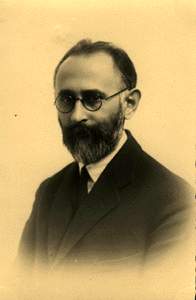
Felix Adler was a German American professor of political and social ethics, rationalist, influential lecturer on euthanasia, religious leader and social reformer who founded the Ethical Culture movement.

The Ethical movement is an ethical, educational, and religious movement established in 1877, by the academic Felix Adler (1851–1933). In effort to develop humanist codes of behavior, the Ethical movement emerged from the moral traditions of the secular societies of Europe and the secular society of the United States of the 19th century. In practice, the Ethical movement organized themselves as two types of organization: (i) a secular humanist movement and (ii) a moral movement, with a religious approach.
Education in Seychelles is free and compulsory from the ages of 6 to 15. The language of instruction is Creole from ages 6 to 10, and then English is gradually introduced as the language of instruction, with French introduced as a foreign language. It has evolved from private mission schools to compulsory public education in the modern system. It is the only African country whose education system features among the top 50 in the world. Seychelles has the highest literacy rate of any country in sub-Saharan Africa at 96.20%. According to The World Factbook - Central Intelligence Agency as of 2018, 95.9% of the population age 15 and over can read and write in Seychelles were respectively literate.
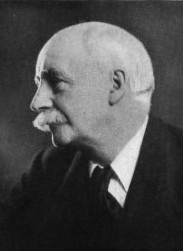
Frederick James Gould was an English teacher, writer, and pioneer secular humanist.
Gustav Spiller was a Hungarian-born ethical and sociological writer who was active in Ethical Societies in the United Kingdom. He helped to organize the First Universal Races Congress in 1911.

Clara Dorothy Bewick Colby was a British-American lecturer, newspaper publisher and correspondent, women's rights activist, and suffragist leader. Born in England, she immigrated to the US, where she attended university and married the former American Civil War general, later Assistant United States Attorney General, Leonard Wright Colby. In 1883, she founded The Woman's Tribune in Beatrice, Nebraska, moving it three years later to Washington, D.C.; it became the country's leading women's suffrage publication. She was an advocate of peace and took part in the great peace conference at San Francisco during the exposition. She also spoke on behalf of the soldiers of the Spanish War. During the Spanish–American War (1898), she was officially appointed as war correspondent, the first woman to be so recognized.
Fourth Conference of the International Woman Suffrage Alliance was held from 15 - 21 June 1908, at the Concertgebouw, Amsterdam, Netherlands.
Helena Theresa Goessmann (1868–1926) was an American lecturer, academic, and writer. During the course of 12 years, she gave over 1,000 lectures and talks on historical, educational, literary, and ethical subjects, in the US, including a period of four months in the winter of 1906, when she delivered in the leading Catholic girls' academies, between New York City, Saint Paul, Minnesota, Omaha, Nebraska, and New Orleans, Louisiana, a course, aggregating 125 lectures, on the "Ethics of Scholarship and Education Today". Goessmann served as the head of the department of History, Notre Dame College, Baltimore and professor of English at State College of Massachusetts. She was actively identified with various social, literary, and religious organizations, in Amherst, Massachusetts, Baltimore, Maryland, and New York.
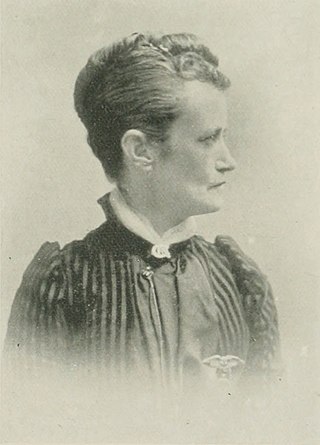
Annie Le Porte Diggs was a Canadian-born American activist, journalist, author, and librarian. She was the chairman of the delegation from Washington, D.C. for the National People's Party Convention, in Omaha, in 1892. It was the first time a woman ever led a delegation at a national political convention. She was a speaker for the People's Party in nearly every state and territory. She served as state librarian of Kansas, 1898–1902. A writer, Diggs served as the associate editor of The Advocate, Topeka, Kansas, and was the author of Little Brown Brothers and the Story of Jerry Simpson. Diggs died in 1916 in Michigan.

Eliza Douglas Keith was an American educator, author, and journalist; she was also a social reformer and activist.
School of Industrial Art and Technical Design for Women was an American school of industrial design founded in 1881 and located in New York City. Pupils were made familiar with the practicality of design, with the workings of machinery, and the technicalities of design as applied to various industries. In its day, it was said to be the only school of practical design for industrial manufacture in the world.
A. Flowerdew was an English teacher, religious poet and hymnist. Her main work was Poems on Moral and Religious Subjects (1867). She died in 1830.
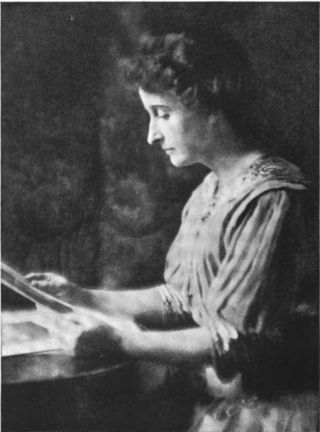
Wilhelmina Seegmiller was a Canadian-born American author, illustrator, and art teacher, recognized as an international education leader. She served as Director of Art Education in the public schools of Indianapolis, Indiana. She was credited for placing the art work in the public schools of Indianapolis on an equal level with any in the United States. Her work was such as to attract attention through the country. Walter Sargent, head of the art department of the University of Chicago, noted that Seegmiller's methods directly affected the lives of thousands of people.

Octavia Williams Bates was an American suffragist, clubwoman, and author of the long nineteenth century. She was involved with women's movements associated with higher education and political enfranchisement. Bates was probably officially connected with more societies looking to these ends than any other woman of her time in Michigan, if not in the U.S. She traveled in various parts of the U.S. and Canada, and was specially interested in the woman suffrage movement. In 1899, after attending a conference in Baltimore, Maryland, Bates was so attracted to the city that she made it her permanent home.

Sarah Louise Arnold was an American educator, author, and suffragist. She was better known in the schoolroom and among teachers than any other woman connected with education in her day. In 1902, she became the first dean of Simmons College. In 1925, she became the national president of the Girl Scouts. Arnold was also a writer of books for teachers and texts for schools.
Belle Caldwell Culbertson was an American author and philanthropist, active in social and religious reforms. She served as president, Woman's Foreign Missionary Society of the Presbytery of Washington City; president, Woman's Inter-Denominational Missionary Union of the District of Columbia; and president, Washington Auxiliary Mission to Lepers. Other positions included: Trustee, Anti-Saloon League; Trustee, International Reform Bureau; vice-president, Mothers' Congress of D.C.; and member, Executive Board, Woman's Christian Temperance Union (W.C.T.U.).
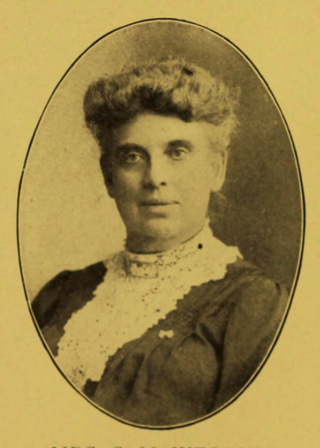
Sara Jane Crafts was an American social reformer, author, lecturer, and teacher. She lectured and taught at Chautauquas, as well as a lecturer at State and International Sunday school conventions. Crafts was an editor and contributor to various periodicals, and published several books between 1876 and 1911. Craft was a social reformer who traveled the world advocating on behalf of Sunday schools, temperance, and anti-opium. She was also "one of the first women to conduct convention sessions" in the U.S.
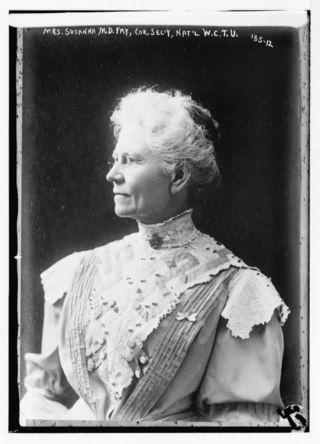
Susanna M. D. Fry was an American educator and temperance worker. Her teaching career began in the primary department of the village school, but her superior ability as a teacher led her swiftly into positions of greater responsibility. Fry was a professor who held the chair of English literature at Illinois Wesleyan University, Bloomington, Illinois and at the University of Minnesota. She served as president of the Minnesota Woman's Christian Temperance Union (W.C.T.U.), and managing editor of The Union Signal, the organ of the National W.C.T.U. During her career as a professor and as an official of the W.C.T.U., Fry was a frequent speaker in Prohibition campaigns and at temperance conventions. Fry was the only woman chosen from the Methodist church to speak before the Parliament of the World's Religions, 1893.
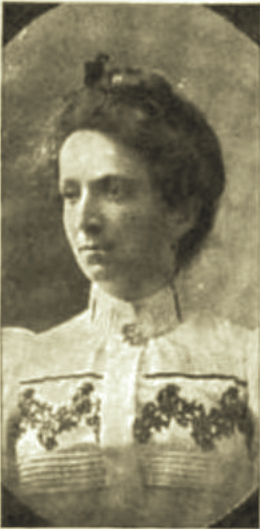
Jane Agnes Stewart was an American author, editor, and contributor to periodicals. She was a special writer for many journals on subjects related to woman's, religious, educational, sociological, and reform movements. Stewart was a suffragist and temperance activist. She traveled to London, Edinburgh, and Paris as a delegate of world's reform and religious conventions.
The Clifton Conference was a gathering of religious leaders held by William N. Hartshorn at his summer home in Clifton, Massachusetts. Five conferences are known to have been held, between 1901 and 1908.

